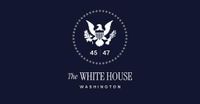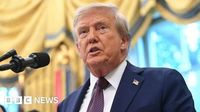On September 5, 2025, United States President Donald Trump set off a political firestorm by signing an executive order to rename the Department of Defense as the Department of War, a move that instantly reignited debates about America’s military posture and national identity. The announcement, made in the stately Oval Office with cameras rolling and top officials at his side, marked a return to a name not seen since the aftermath of World War II. The president, never one to shy away from controversy, insisted that the change would signal a new era of American strength, resolve, and, as he put it, "victory."
"So we won the First World War. We won the Second World War. We won everything before that and in between. And then we decided to go woke, and we changed the name to Department of Defense," Trump declared during the signing ceremony, as reported by AFP. "We should have won everywhere. We could have won every war, but we really chose to be very politically correct or woke." For Trump, the name change was more than symbolic—it was a direct repudiation of what he described as the "woke ideology" that, in his view, had permeated the Pentagon and blunted America’s willingness to win wars.
The executive order, published by the White House and detailed by BBC and other outlets, authorizes Secretary of Defense Pete Hegseth and other top Pentagon officials to use new titles—like "Secretary of War" and "Deputy Secretary of War"—in official correspondence and public communications. However, the president’s authority can only go so far: a permanent change would require an act of Congress. To that end, Trump directed Hegseth to recommend legislative and executive actions within 60 days to make the renaming permanent.
The order’s text hearkens back to the department’s origins. The Department of War was established in 1789 under President George Washington and led the nation through the War of 1812, World War I, and World War II. It was renamed the Department of Defense in 1947, as part of a postwar reorganization meant to consolidate the Army, Navy, and newly created Air Force under a single, civilian-headed agency. Historians note that the shift to "Defense" was also intended to reflect a new emphasis on preventing war—especially in the nuclear age—rather than simply waging it.
But Trump argued that the current global climate demands a more assertive posture. "The name 'Department of War' conveys a stronger message of readiness and resolve compared to 'Department of Defense,' which emphasizes only defensive capabilities," the executive order reads. "I think it's a much more appropriate name, in light of where the world is right now," Trump told reporters, as quoted by the BBC. "It sends a message of victory."
Pentagon chief Pete Hegseth, a loyal Trump ally and the newly christened "Secretary of War," was quick to endorse the change. "This name change is not just about renaming, it's about restoring," Hegseth said at the Oval Office ceremony. "Words matter. The War Department is going to fight decisively, not endless conflicts. It's going to fight to win, not not to lose. We're going to go on offence, not just on defence. Maximum lethality, not tepid legality. Violent effect, not politically correct." His remarks, echoed in DW and BBC reporting, signaled a clear break from the Pentagon’s recent focus on diversity, equity, and inclusion programs—initiatives Trump and Hegseth have sharply criticized as "woke ideology."
The White House was quick to implement the rebranding—even before Congress weighed in. On Friday, the Pentagon’s website switched to war.gov, emblazoned with the headline "U.S. Department of War," and the department’s social media channels proclaimed "WE ARE THE WAR DEPARTMENT." According to BBC, the overhaul could eventually cost upwards of a billion dollars, with hundreds of agencies, emblems, email addresses, and uniforms needing updates to reflect the new identity.
Trump’s penchant for renaming federal entities is nothing new. His administration previously restored the name "Fort Bragg" to a North Carolina Army base, reversing a brief change to "Fort Liberty" that had been made to distance the site from its Confederate origins. In a June speech at the base, Trump quipped, “Can you believe they changed that name in the last administration for a little bit? But we’ll forget all about that, won’t we? Fort Bragg is in. That’s the name, and Fort Bragg, it shall always remain.”
The timing of the Department of War rebrand is no accident. The move follows a series of high-profile military actions under Trump’s second term, including bombing campaigns in Yemen, Iran, and the southern Caribbean Sea. Just days before the executive order, a deadly aerial strike on a suspected drug-smuggling boat in the Caribbean killed 11 people. Trump and his top officials have vowed to conduct more such "extrajudicial strikes" on alleged "narco terrorists." As AFP noted, experts warn these operations risk targeting civilians, including fishermen and migrants, and may lack clear legal justification. Trump, for his part, seemed unfazed: “I don’t even know about fishermen,” he said. “They may say, ‘I’m not getting on the boat. I’m not going to take a chance.’”
While Trump’s supporters argue that the rebranding is a necessary step to "restore the warrior ethos" and deter America’s adversaries, critics see it as dangerous saber-rattling. Democratic Senator Andy Kim of New Jersey dismissed the renaming as "a childish idea," telling BBC, "Americans want to prevent wars, not tout them." Others worry that the move reflects a broader shift toward a more aggressive foreign policy, with the potential to escalate conflicts rather than resolve them. The timing of the announcement, coming just after China’s massive military parade showcasing new weapons and drones, only heightened concerns about an arms race or renewed great-power rivalry.
For all the fanfare, the actual impact of the executive order remains to be seen. Statutory references to the Department of Defense and its offices remain controlling until Congress enacts a law to formalize the change. In the meantime, all executive departments and agencies have been instructed to "recognize and accommodate" the use of the new titles in communications, as long as it does not create confusion with legal or international obligations.
Trump’s executive order marks his 200th since returning to office—a testament to his determination to leave an indelible mark on the federal government. Whether the "Department of War" will become a permanent fixture or remain a political flashpoint will depend on Congress, public opinion, and the evolving global landscape. For now, the debate over America’s military identity—and its willingness to fight—has been reignited in a way not seen in generations.





